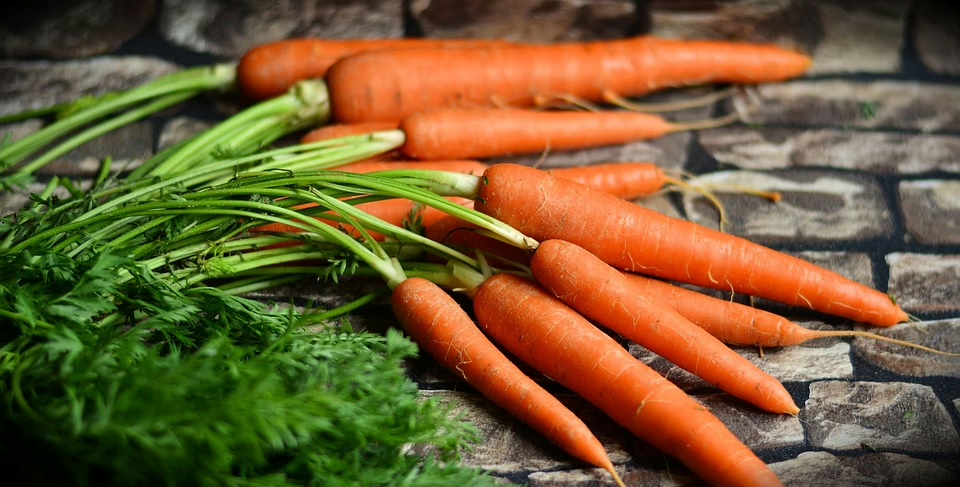Visual Feast: The Art of Nutritious Food Photography
In an era where images dominate our online interactions, food photography has evolved from a mere trend into a powerful form of art and marketing. It’s no longer enough to prepare a dish with care and intention; in today’s visually-driven society, how food is presented can significantly impact both its appeal and success. This article delves into the art of food photography, particularly focusing on how to capture the beauty of nutritious food while also appealing to the tastes and preferences of an increasingly health-conscious public.
The Importance of Food Photography
Food photography serves multiple purposes: it tantalizes the viewer, promotes culinary businesses, and educates consumers. From marketing campaigns that promote healthy eating to social media posts that inspire home cooks, high-quality food photography compels audiences to engage, share, and create. Studies show that visually appealing images can evoke emotional responses, making viewers more likely to not only enjoy looking at the food but also to desire it.
The Emotional Connection
Food photography taps into our emotions. A well-composed image can stimulate cravings, foster fond memories, or inspire new culinary adventures. According to research, images that display vibrant colors and visually interesting compositions can create a heightened sense of taste and appetite, leading to an emotional response that goes beyond mere hunger.
Essential Elements of Nutritious Food Photography
Capturing the essence of nourishing food involves understanding the elements of good photography while also focusing on the health aspect of the food being photographed. Here are key factors to consider when embarking on a food photography journey.
1. Lighting
Lighting is arguably the most critical aspect of food photography. Natural light is preferred as it brings out the vivid colors of fresh ingredients. Soft, diffused light, such as that found near windows during golden hour, can help reduce harsh shadows and highlight the textures and colors of food.
Tip: If shooting indoors, set up near large windows and use sheer curtains to diffuse direct sunlight.
2. Composition
Composition refers to how elements are arranged within a frame. Techniques like the Rule of Thirds can guide photographers in creating balanced and engaging images. Placing the main subject off-center tends to make the image more aesthetically pleasing.
Tip: Use leading lines—like a table or a series of ingredients—to draw the viewer’s eye into the photograph.
3. Textures and Colors
Nutritious food is often vibrant and textured, making it visually captivating. Highlighting these features can enhance the appeal of food photography. For example, the shiny skin of a ripe tomato or the fluffy texture of a whipped avocado can make viewers’ mouths water.
Tip: Pair contrasting colors: a green salad might look even more enticing next to a bright red bowl to help it pop.
4. Props and Backgrounds
Supporting elements, including colored plates, utensils, and linen, can add depth and context to food photography. The right background will not only frame the dish but also enhance its appeal.
Tip: Use textured surfaces like wooden boards or crisp white tablecloths to create contrast with the food.
5. Stylistic Techniques
Food styling is as important as photography. Using garnishes, arranging food creatively, and even adding spills and drizzles can make the food look more lifelike and appealing.
Tip: Try incorporating fresh herbs, spices, or sauces to add pops of color and intrigue.
Techniques for Capturing Nutrient-Rich Foods
When it comes to photographing nutritious foods, there are a few additional strategies one can adopt to highlight their health benefits.
Highlighting Freshness
Fresh ingredients often communicate health, vitality, and nutrition. Use techniques that accentuate the freshness of your subjects: show a splash of water on a leafy green or sliced avocados that reveal their creamy interior.
Incorporating Healthy Cooking Methods
Photograph meals that embody health-conscious cooking techniques, such as steaming, grilling, or roasting. Capturing the steam rising from these dishes can indicate warmth and readiness, invoking feelings of comfort.
Showcasing Whole Ingredients
Reveal the raw components of a dish in the same frame as the final presentation. This juxtaposition can convey transparency in cooking and an emphasis on whole, unprocessed foods.
Photo Editing and Post-Processing
In the age of digital photography, post-processing can make a significant difference in the final outcome of food images. Editing can enhance colors, correct lighting, and even adjust the framing of photos to draw more attention to the subject matter.
Popular Editing Software
- Adobe Lightroom: Ideal for basic adjustments like exposure and color correction.
- Adobe Photoshop: Useful for more advanced editing, including layering and masking.
- Mobile Apps: Apps like VSCO or Snapseed offer excellent editing capabilities for those on the go.
Dos and Don’ts of Photo Editing
- Do enhance the colors but avoid making them unrealistic.
- Do use filters sparingly. Over-filtering can lead to unnatural images.
- Don’t crop too tightly. Leaving some space can make a composition feel open and inviting.
Case Study: Successful Food Photography Campaigns
1. Blue Apron
Blue Apron, a meal kit delivery service, leverages stunning food photography to market its offerings. Their images not only showcase the dishes themselves but also emphasize the fresh ingredients included in each kit. The use of vibrant colors and textures captures the essence of home-cooked meals and encourages customers to visualize themselves preparing these dishes.
2. Green Chef
Green Chef focuses on health and sustainability, and their photography reflects this ethos. They produce images that highlight the organic nature of their ingredients and the beauty of healthy meals. Through clever compositions and stellar lighting, they manage to inspire customers to choose nutritious options.
Perspectives from Professionals
To gain insight into the world of nutritious food photography, we consulted professional food photographers.
Interviewees:
- Sarah Anderson: A food stylist and photographer with ten years of experience.
- Mark Klein: A renowned food photographer who works with several health-based brands.
Key Takeaways
- Styling Matters: According to Sarah, “Food styling is critical. The way you present the food can alter perception.”
- Managing Expectations: Mark states, “Clients often expect perfection. It’s important to communicate the time it takes to achieve that, especially with fresh ingredients.”
The Future of Food Photography
As technology evolves, so does the art of food photography. Drones, smartphones, and advancements in software are opening new avenues for innovative images. As consumers become more health-conscious, the demand for beautiful, nutritious food photography will continue to grow.
Influencer Impact
Social media influencers are leading the charge in this space. They often showcase not just the food but the lifestyle that accompanies healthy eating. Their ability to connect with audiences on platforms like Instagram and TikTok serves as a perfect example of how impactful food imagery can be.
Sustainability Considerations
The future will also need to consider sustainability. As consumers grow more aware of food waste and environmental impact, photographers must adapt their work to reflect these values, opting for local, seasonal ingredients and sustainable practices in their photography.
Conclusion
Food photography is an intricate art that transcends merely capturing the culinary creation. It tells a story, evokes emotions, and inspires choices—especially those related to nutrition. By understanding the fundamentals of photography while focusing on the beauty and health of food, photographers can create a visual feast that not only tempts the audience but also promotes a more nutritious lifestyle. As technology and consumer preferences evolve, the art of capturing food will only grow richer and more profound.
In every dish that is beautifully photographed, there lies an opportunity to nourish not just the body but also the soul, evoking one of the simplest yet most profound joys: the joy of eating well.
Footnotes:
[1]: “Psychology of Food Photography: How Visual Stimuli Affect Appetite.” Journal of Consumer Psychology. [2]: “Lighting Techniques in Food Photography.” Photography for Beginners. [3]: “Understanding Composition: Rules that Make Food Photography Shine.” Food Styling Techniques. [4]: “Post-Processing Techniques for Food Photography.” Adobe Photoshop Tutorials. [5]: “Case Studies in Successful Food Campaigns.” Marketing Research Journal. [6]: “Tips from Professionals: What It Takes to Capture Food Photography.” The Photographer’s Handbook.This article provides an overview of food photography, effectively combining practical tips and professional insights with a focus on capturing the beauty of nutritious food.


























Add Comment